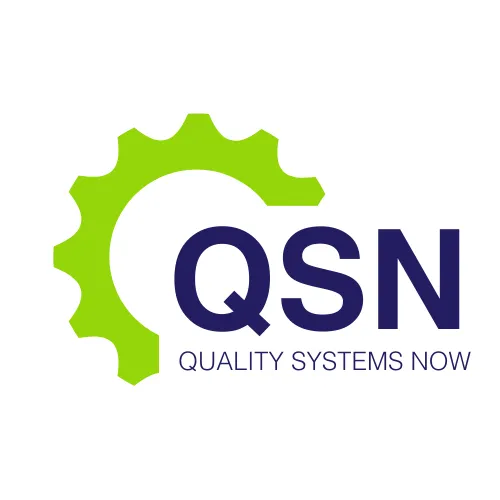LATEST NEWS

Compliance as a Business Enabler: A Strategic Approach
Compliance with regulatory standards is often perceived as a burden, particularly by senior business leaders focused on profitability, growth, and operational efficiency. However, when communicated effectively, compliance can be framed as a crucial business enabler that aligns with and supports your objectives. Today we explore strategies for communicating the value of compliance in terms that resonate with business leaders, focusing on protecting revenue, operational stability, and long-term growth. It also examines methods for aligning compliance with business goals, avoiding technical jargon, and positioning it as a driver of efficiency and risk mitigation.
Introduction
Regulatory compliance is an essential aspect of any business operating in regulated industries. However, compliance is often viewed as a necessary but costly requirement rather than a strategic tool that can drive business success. The challenge for compliance professionals is to shift this perception and communicate the role of compliance as a business enabler.
This paper proposes that by framing compliance in terms of business outcomes, aligning it with corporate objectives, and avoiding technical jargon, compliance can be viewed not only as a regulatory obligation but also as a vital component of business strategy that supports growth, operational excellence, and risk management.
Framing Compliance as a Business Enabler
The primary objective in communicating compliance to senior leaders is to demonstrate its role in protecting revenue, ensuring operational stability, and enabling long-term market access. Rather than focusing solely on regulatory requirements, compliance should be presented as a tool that minimizes risks and optimizes performance across the organization.
Protecting Revenue and Reducing Risk
One of the most compelling ways to frame compliance is by emphasizing its role in protecting revenue streams. Non-compliance can lead to severe financial penalties, product recalls, and reputational damage, all of which have a direct impact on a company’s bottom line. By adhering to compliance standards, businesses can avoid costly disruptions that might otherwise result from legal liabilities or regulatory fines.
For example, a compliance strategy that ensures adherence to industry standards and regulations can help prevent incidents such as product defects or contamination, which can lead to large-scale recalls. Recalls not only result in direct financial losses but also damage brand reputation and erode customer trust. By communicating these risks in financial terms—such as the potential to avoid a multimillion-dollar recall—compliance professionals can better articulate the value of compliance to senior leadership.
Operational Stability and Market Access
Another key benefit of compliance is its contribution to operational stability. Consistent compliance with regulatory standards ensures that products meet quality expectations, which is critical for maintaining market access. In industries such as pharmaceuticals, medical devices, and food production, failure to comply with regulatory requirements can result in product bans, import/export restrictions, or even permanent market exclusion.
In this context, compliance can be framed as a safeguard for operational continuity and market expansion. By maintaining high standards of quality and safety, companies can build trust with regulatory bodies, customers, and stakeholders, which in turn supports long-term business growth and international market access.
Aligning Compliance with Business Objectives
To ensure that compliance is viewed as an integral part of business strategy, it is essential to communicate its alignment with broader business objectives. This involves translating regulatory requirements into business language and demonstrating how compliance contributes to profitability, risk mitigation, and operational efficiency.
Use Business Language: Risk Mitigation, Profit Protection, and Cost Optimization
Compliance professionals often struggle to gain traction with senior leaders because they focus too heavily on technical regulatory details. Instead, it is crucial to communicate in terms that resonate with business priorities. For example, rather than discussing the specifics of a regulation, focus on the business impact of compliance.
Senior leaders are primarily concerned with protecting the company’s financial interests. Therefore, compliance should be positioned as a critical element of risk mitigation. For instance, explaining how compliance with environmental regulations can prevent fines, shutdowns, and costly legal battles will have more impact than detailing the complexities of those regulations. Similarly, emphasizing the role of compliance in protecting revenue by avoiding supply chain disruptions or product recalls will make a more compelling case than simply citing regulatory guidelines.
Operational Efficiency and Excellence
Another important aspect of aligning compliance with business goals is highlighting its role in improving operational efficiency. Compliance-driven processes, when executed correctly, can lead to more streamlined operations, reducing the need for rework and preventing delays in product development and market access.
By ensuring that compliance requirements are met early in the production or development process, companies can avoid costly bottlenecks or rejections from regulatory bodies. This proactive approach not only reduces inefficiencies but also speeds up time-to-market, giving businesses a competitive edge. In this way, compliance can be framed as a facilitator of operational excellence rather than a bureaucratic hurdle.
Avoiding Technical Jargon in Compliance Communication
One of the most common mistakes in communicating compliance to senior leaders is overloading the conversation with technical jargon. While regulatory details are crucial for day-to-day operations within compliance teams, senior executives are more concerned with the overall impact on the business. As such, it is important to simplify the message and focus on outcomes.
Outcome-Oriented Communication
The goal of compliance communication should be to convey the tangible benefits of compliance efforts. For example, instead of explaining the fine details of a specific regulation, it is far more effective to focus on how compliance will prevent a potential $500,000 fine or ensure continued market access.
By keeping the language simple and focused on business results, compliance professionals can more effectively engage senior leaders and demonstrate the direct value of compliance initiatives. This outcome-oriented communication style not only improves understanding but also fosters greater support for compliance initiatives at the executive level.
Do You need Help Communicating Your Compliance Message?
In today’s regulatory environment, compliance is an essential function that plays a critical role in protecting revenue, ensuring operational stability, and supporting business growth. However, for compliance to be fully integrated into business strategy, it must be communicated in a way that aligns with the priorities of senior leadership.
By framing compliance as a business enabler—focusing on risk mitigation, market access, and operational efficiency—compliance professionals can shift the narrative from regulatory burden to strategic advantage. Furthermore, avoiding technical jargon and focusing on outcome-oriented communication ensures that compliance efforts are understood and valued by those who make key business decisions.
In conclusion, effective compliance communication has the power to transform how businesses view regulatory adherence, positioning it as a key driver of success in today’s complex market landscape.
